Discovered Gold Pendant Of Odin And His Horse Sleipnir Might Be Linked To The Heruli Tribe
Ellen Lloyd - AncientPages.com - A gold pendant depicting the Norse God Odin and his horse Sleipnir has been discovered on a farm in Kungsbacka, Sweden. Archaeologists think the precious jewelry can be linked to the Heruli, the Huns and ancient Romans.
The Heruli were an East Germanic tribe that lived near the Sea of Azov, near the Black Sea, in the third century AD, and later moved to the Roman frontier on the central European Danube at the same time as many eastern "barbarians" during late antiquity, such as the Goths, Huns, Scirii, Rugii and Alans.
Albert 21st King of the Heruli.
The precise origins of the Heruli (or Heroli) are unknown. They seem to have borne some relationship with the tribes that formed the Suevi. Ancient inscriptions in Scandinavia which are sometimes attributed to them suggest that this fierce, martial people were called the 'lords'.
In 1867, Swedish farmer Peter Andreasson made a unique find on his land, discovering a pendant from the 500s. Now, archaeologist Bengt Nordqvist and his team have literally struck gold. The gold pendant of Odin riding a horse was found close to the first find.
Odin, who has always been associated with war, healing, royalty, death, knowledge, wisdom, battles, frenzy, magic and runes was the supreme Norse god. He is mentioned in many mythological stories, not only from the Norse, but also Germanic and pagan mythologies.
In myths and legends, it told that he took Sleipnir, his eight-legged horse to the sky or underworld.
Gold pendant of Odin and Slepnir. Image credit: Bengt Nordqvist
Nordqvist says the gold pendant is an exceptional discovery. He estimates that the pendant is from the year 400 A.D.
The pendant was probably a medal or military award that ended up in the ground as a sacrifice, Nordqkvist said.
Yet, it seems somewhat strange to archaeologists that such a valuable pendant would be sacrificed in a remote place like this one.
See also:
Runes: Facts And History About Odin’s Secret Language
Sleipnir: Eight-Legged Horse With Supernatural Strength That Belonged To God Odin
Odin: Norse God Of War And Magic – Most Complex Figure Of The Norse Pantheon
What makes both discoveries very exciting is that the pendants have a runic inscription that links the jewelry to the Heruli, the Huns, and ancient Romans. The inscription reads: “I erilen” and suggests an ancient connection to the Heruli.
“Erils or Heruli, are mentioned in ancient sources as participants in the great wars between the Romans, Huns, and Goths, Nordqvist says. “The Huns came across large amounts of gold and the connection to the ancient scriptures is of course very exciting,” he continues.
The fact that two ancient gold pendants of historical value have already been found in close vicinity, suggests there could be much more out there. Archaeologists will have to examine the area closer and look for more ancient treasures that could cast more light on these discoveries.
Written by Ellen Lloyd – AncientPages.com
Copyright © AncientPages.com & Ellen Lloyd All rights reserved. This material may not be published, broadcast, rewritten or redistributed in whole or part without the express written permission of AncientPages.com and Ellen Lloyd
About the author:
Ellen Lloyd – is the owner of AncientPages.com and an author who has spent decades researching ancient mysteries, myths, legends and sacred texts, but she is also very interested in astronomy, astrobiology and science in general.
More From Ancient Pages
-
 Did Lead Poisoning Cause The Fall Of The Roman Empire?
Archaeology | Oct 24, 2017
Did Lead Poisoning Cause The Fall Of The Roman Empire?
Archaeology | Oct 24, 2017 -
 Mystery Of The Roman Tile Kiln At Brandiers Farm Solved!
Archaeology | Aug 18, 2023
Mystery Of The Roman Tile Kiln At Brandiers Farm Solved!
Archaeology | Aug 18, 2023 -
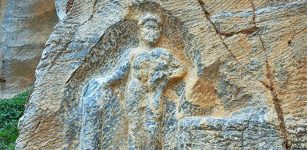 Ancient Relief Depicting Heracles With His Crook And A Seven-Headed Snake Should Be Protected
Archaeology | Dec 14, 2015
Ancient Relief Depicting Heracles With His Crook And A Seven-Headed Snake Should Be Protected
Archaeology | Dec 14, 2015 -
 Early Humans In The Hula Valley Invested In Systematic Procurement Of Raw Materials Hundreds Of Thousands Of Years Ago
Archaeology | Jul 19, 2023
Early Humans In The Hula Valley Invested In Systematic Procurement Of Raw Materials Hundreds Of Thousands Of Years Ago
Archaeology | Jul 19, 2023 -
 Unusual 4,000-Year-Old Site And Other Curiosities Discovered In Overstone, Northamptonshire, UK
Archaeology | Jan 10, 2023
Unusual 4,000-Year-Old Site And Other Curiosities Discovered In Overstone, Northamptonshire, UK
Archaeology | Jan 10, 2023 -
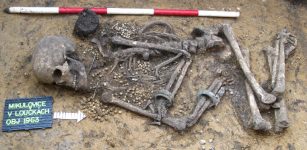 Central European Prehistory Was Highly Dynamic – New Study Shows
Archaeology | Aug 27, 2021
Central European Prehistory Was Highly Dynamic – New Study Shows
Archaeology | Aug 27, 2021 -
 Long-Lost Artifact Re-Discovered In Michigan Offers Evidence Of Overseas Visitors In Pre-Columbian Times
Legends And Mysteries Of North America | Jul 16, 2024
Long-Lost Artifact Re-Discovered In Michigan Offers Evidence Of Overseas Visitors In Pre-Columbian Times
Legends And Mysteries Of North America | Jul 16, 2024 -
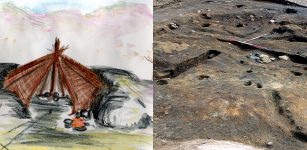 Stone Age People Lived In Reused Houses – Not Just Caves – Discovery In Norway Reveals
Archaeology | Jan 26, 2018
Stone Age People Lived In Reused Houses – Not Just Caves – Discovery In Norway Reveals
Archaeology | Jan 26, 2018 -
 Discovery Of World’s Oldest Fortresses Reshapes Our Understanding Of Hunter–Gatherers
Archaeology | Dec 7, 2023
Discovery Of World’s Oldest Fortresses Reshapes Our Understanding Of Hunter–Gatherers
Archaeology | Dec 7, 2023 -
 Controversial Sand Mounds In Australia Are 6,000 Years Old Man-Made Burial Mounds – Radar Scans Reveal
Archaeology | Feb 10, 2018
Controversial Sand Mounds In Australia Are 6,000 Years Old Man-Made Burial Mounds – Radar Scans Reveal
Archaeology | Feb 10, 2018 -
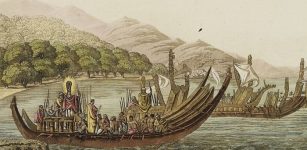 Stone Artifacts Reveal Long-Distance Voyaging Among Pacific Islands During The Last Millennium – New Study
Archaeology | Apr 21, 2023
Stone Artifacts Reveal Long-Distance Voyaging Among Pacific Islands During The Last Millennium – New Study
Archaeology | Apr 21, 2023 -
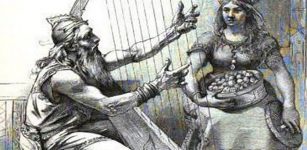 Bragi – Norse God Of Poetry, Eloquence, Music And Singing And Husband To Idun Who Protected Golden Apples
Featured Stories | Mar 17, 2018
Bragi – Norse God Of Poetry, Eloquence, Music And Singing And Husband To Idun Who Protected Golden Apples
Featured Stories | Mar 17, 2018 -
 Baffling Archaeological Find At George Washington’s Mount Vernon
Archaeology | Jun 20, 2024
Baffling Archaeological Find At George Washington’s Mount Vernon
Archaeology | Jun 20, 2024 -
 Prehistoric House Of The Dead Discovered In Wiltshire – Is This The Burial Place Of Ancestors Of Stonehenge Builders?
Archaeology | Jul 17, 2017
Prehistoric House Of The Dead Discovered In Wiltshire – Is This The Burial Place Of Ancestors Of Stonehenge Builders?
Archaeology | Jul 17, 2017 -
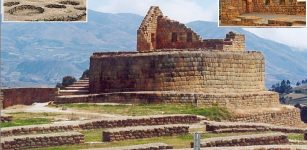 Ancient Ingapirca: Largest And Best Preserved Inca Ruins In Ecuador
Civilizations | Dec 9, 2016
Ancient Ingapirca: Largest And Best Preserved Inca Ruins In Ecuador
Civilizations | Dec 9, 2016 -
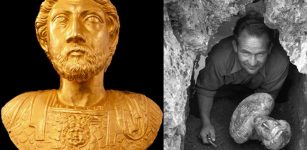 Extremely Rare Life-Size Gold Bust Of Emperor Marcus Aurelius On Display At Getty
Artifacts | May 24, 2023
Extremely Rare Life-Size Gold Bust Of Emperor Marcus Aurelius On Display At Getty
Artifacts | May 24, 2023 -
 Fylgja – Norse Guardian Spirit Was Deeply Respected
Norse Mythology | Apr 1, 2024
Fylgja – Norse Guardian Spirit Was Deeply Respected
Norse Mythology | Apr 1, 2024 -
 A Rare Find In Ancient Timorese Mud May Rewrite The History Of Human Settlement In Australasia
Featured Stories | May 28, 2024
A Rare Find In Ancient Timorese Mud May Rewrite The History Of Human Settlement In Australasia
Featured Stories | May 28, 2024 -
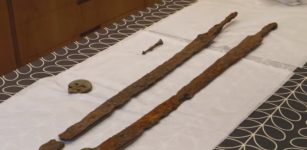 Unique Ancient Roman Cavalry Swords Found In Cotswolds, UK
Archaeology | Sep 18, 2023
Unique Ancient Roman Cavalry Swords Found In Cotswolds, UK
Archaeology | Sep 18, 2023 -
 Drone Reveals 3,000-Year-Old ‘Mega Fortress’ Dmanisis Gora In The Caucasus Mountains Is Much Larger Than Previously Thought
Archaeology | Jan 9, 2025
Drone Reveals 3,000-Year-Old ‘Mega Fortress’ Dmanisis Gora In The Caucasus Mountains Is Much Larger Than Previously Thought
Archaeology | Jan 9, 2025




